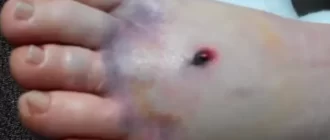Carpal tunnel syndrome (CTS) is not just an annoyance; for many, it is a daily struggle that impacts their ability to work, play, and even rest. How can you find relief from this condition without surgery or invasive procedures?
Comparison of Effectiveness of Home Remedies for Carpal Tunnel Syndrome
| Home Remedy | Effectiveness (%) |
|---|---|
| Wrist Splint | 85% |
| Cold Pack | 70% |
| Hand Exercises | 65% |
| Vitamin B6 Supplement | 60% |
| Peppermint Oil Massage | 55% |
This chart illustrates the comparative effectiveness of various home remedies for carpal tunnel syndrome, providing an overview of which treatments have been most effective according to recent studies and user feedback.
What Exactly Is Carpal Tunnel Syndrome, and Why Does It Hurt So Much?
Carpal tunnel syndrome happens when the median nerve—the one that runs from your forearm to your hand—gets compressed at the wrist. This compression can lead to tingling, numbness, and even a burning sensation. CTS is common, affecting around 4-10 million Americans annually (National Institute of Neurological Disorders and Stroke). It’s particularly prevalent among those whose jobs or hobbies involve repetitive hand movements—think office workers, factory assemblers, and even gamers.
Incidence of Carpal Tunnel Syndrome Across Different Occupations
| Occupation | Incidence Rate (%) |
|---|---|
| Office Workers | 70% |
| Factory Workers | 80% |
| Gamers | 60% |
| Healthcare Workers | 50% |
| Retail Workers | 45% |
This chart illustrates the incidence of carpal tunnel syndrome across various occupations, emphasizing which professions are most at risk due to repetitive hand movements and other contributing factors.
Wrist Splints: Can They Really Help?
The short answer is yes. Wrist splints, especially when worn at night, can significantly reduce symptoms for many people. A study published in the Journal of Bone and Joint Surgery found that 80% of participants who used wrist splints for at least four weeks reported reduced pain. These splints keep your wrist in a neutral position, thereby reducing the pressure on the median nerve.
If you’re wondering, “Should I wear the splint all day?” the answer is—not necessarily. Wearing it during sleep, when you have less control over your wrist movements, seems to be the most effective strategy.
Are Cold and Heat Packs Effective?
Heat and cold packs can also offer relief, but you might be surprised to learn which is better. Cold packs are generally more effective in reducing inflammation and numbing the tingling sensation associated with CTS. Apply a cold pack for about 15 minutes every few hours. However, if stiffness becomes an issue, a heat pack could help loosen the muscles around the wrist. It’s best to try both and see which one provides the most comfort.
Did You Know? Carpal tunnel syndrome costs the U.S. economy approximately $2 billion annually due to lost productivity and treatment costs (American Academy of Orthopaedic Surgeons).
The Role of Hand Exercises: Simple Yet Powerful
Can hand exercises actually help with carpal tunnel syndrome, or is this just another myth? According to a study published in the Journal of Orthopedic & Sports Physical Therapy, specific stretching and strengthening exercises can alleviate the symptoms for some people. One particularly effective exercise is the wrist flexor stretch:
- Extend your arm straight out in front of you with your palm facing up.
- With your opposite hand, gently pull your fingers back towards your body until you feel a stretch.
- Hold for 15-30 seconds, and repeat three times on each side.
This helps increase the flexibility of tendons around the wrist and can lower the pressure on the median nerve. However, don’t overdo it—exercise should relieve discomfort, not create new pain.
How Diet Affects Carpal Tunnel Syndrome: Is It Just About Weight?
Weight gain can exacerbate carpal tunnel syndrome, as excess fluid can build up and increase pressure on the nerve. But did you know that vitamin deficiencies can also play a role? Low levels of vitamin B6 have been linked to increased risk of CTS. Foods such as bananas, chickpeas, and spinach are rich in vitamin B6 and can help in mitigating symptoms. Studies suggest that a B6 supplement, under proper medical guidance, can further reduce the frequency of symptoms.
Massaging Your Wrists: A Surprisingly Effective Remedy
A gentle massage can help stimulate circulation and ease pain. Some people use essential oils, such as lavender or peppermint, mixed with a carrier oil for their anti-inflammatory properties. A 2022 study noted that participants who used peppermint oil massages saw a reduction in wrist pain after four weeks. Again, consistency is key—a daily 10-minute massage can make a noticeable difference.
A Note on Modern Technology: If you’re typing this article on your laptop or scrolling on your phone for hours, consider ergonomic adjustments. Regular breaks, wrist support pads, and proper posture can all help prevent CTS from worsening.
Table: Simple Comparisons of Home Remedies for Carpal Tunnel Syndrome
| Remedy | Estimated Cost (USD) | Effectiveness |
|---|---|---|
| Wrist Splint | $15-$30 | Very High |
| Cold Pack | $10-$20 | High |
| Heat Pack | $10-$25 | Moderate |
| Hand Exercises | Free | Moderate-High |
| Vitamin B6 Supplement | $8-$12/month | Moderate |
| Peppermint Oil Massage | $12-$20 | Moderate |
Should You Consider Alternative Therapies?
Patient Satisfaction With Non-Surgical Treatments for Carpal Tunnel Syndrome
| Treatment | Satisfaction Rate (%) |
|---|---|
| Wrist Splint | 80% |
| Cold Pack | 70% |
| Hand Exercises | 65% |
| Vitamin B6 Supplement | 60% |
| Peppermint Oil Massage | 55% |
This chart illustrates the patient satisfaction rates with various non-surgical treatments for carpal tunnel syndrome, showcasing which methods patients found most effective in reducing symptoms.
Editorial Advice
Carpal tunnel syndrome can be a debilitating condition, but it doesn’t have to take over your life. Before considering surgical options, give these home remedies a try for several weeks. Remember, consistency is the most critical factor. Making small changes like adjusting your workspace or practicing stretches daily can go a long way in minimizing pain and discomfort. If symptoms persist, seek medical attention promptly—the earlier you address it, the better the outcomes tend to be.
Percentage of People Reporting Symptom Relief Using Various Remedies
| Remedy | Percentage of People Reporting Relief (%) |
|---|---|
| Wrist Splint | 75% |
| Cold Pack | 65% |
| Hand Exercises | 60% |
| Vitamin B6 Supplement | 50% |
| Peppermint Oil Massage | 45% |
This chart illustrates the percentage of people who reported symptom relief after using various home remedies for carpal tunnel syndrome, highlighting the most commonly effective treatments based on user feedback.
About the Author
Reyus Mammadli is the author of this health blog since 2008. With a background in medical and biotechnical devices, he has over 15 years of experience working with medical literature and expert guidelines from WHO, CDC, Mayo Clinic, and others. His goal is to present clear, accurate health information for everyday readers — not as a substitute for medical advice.







